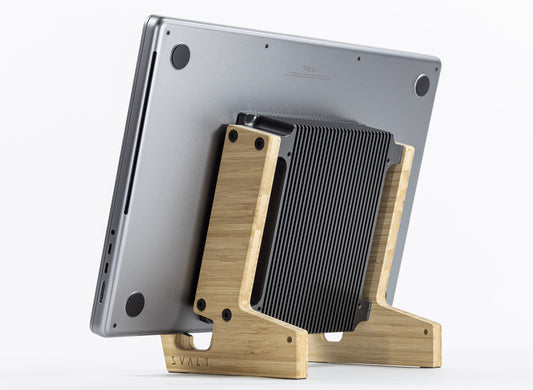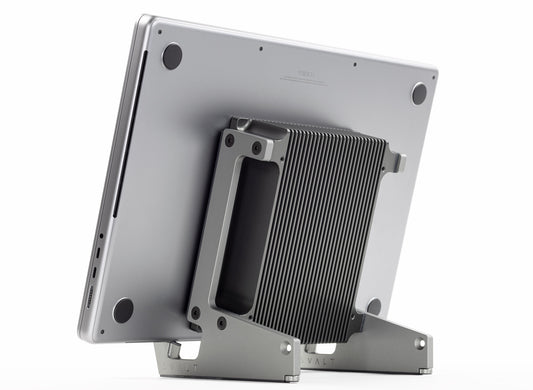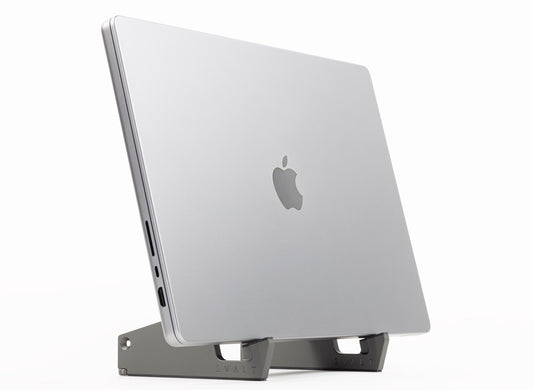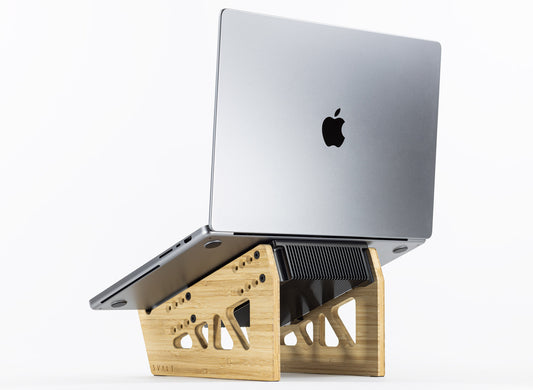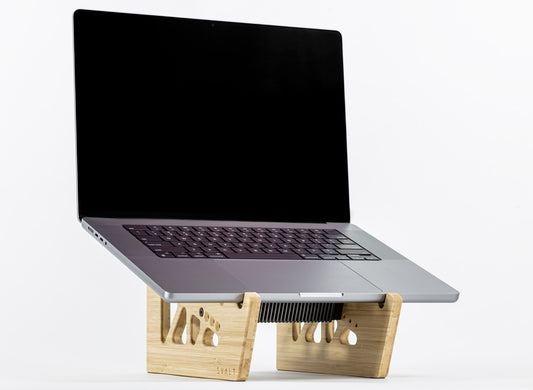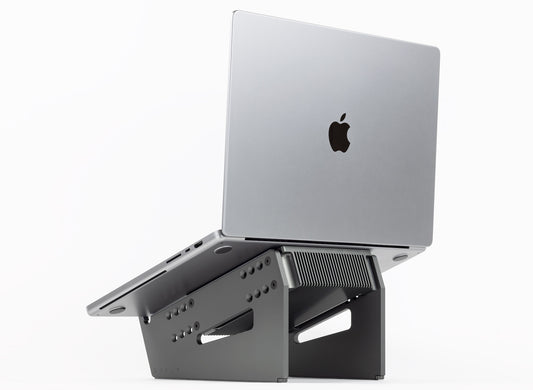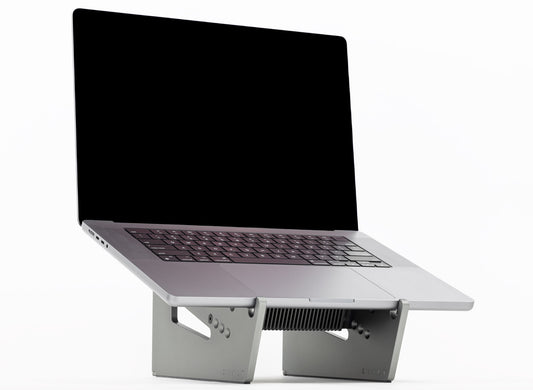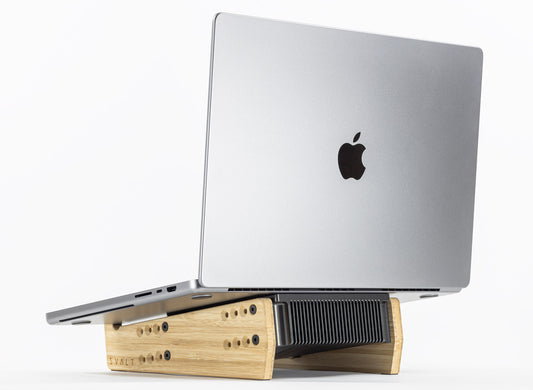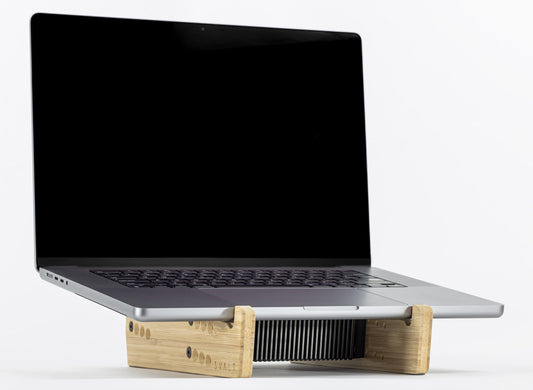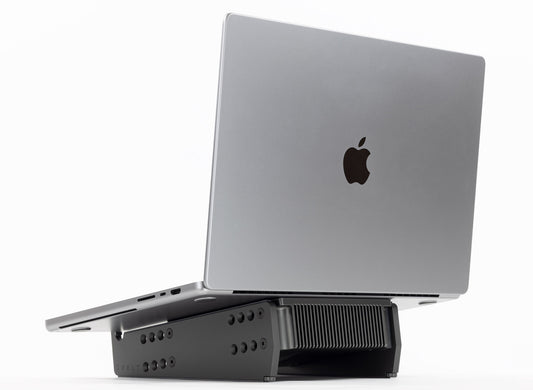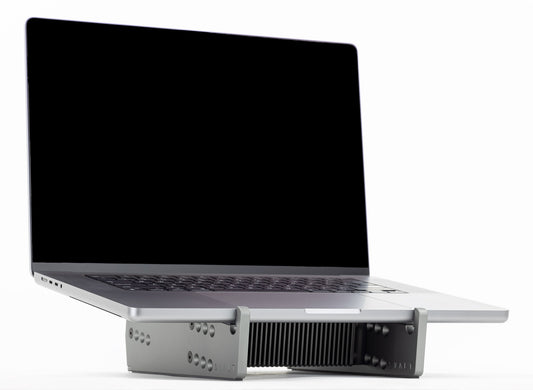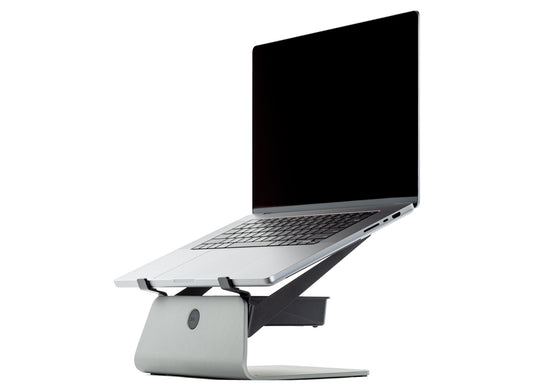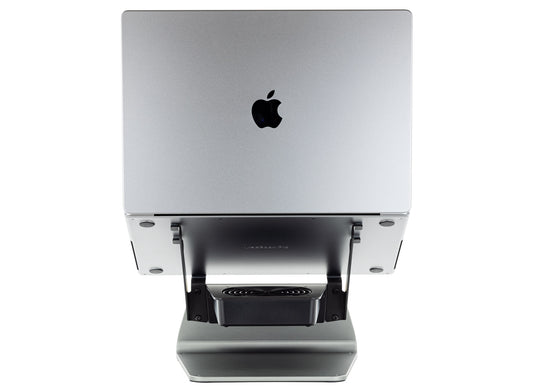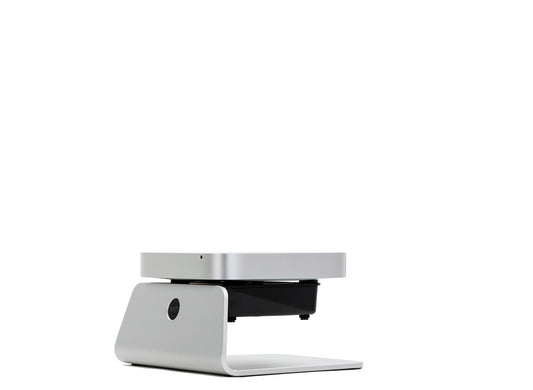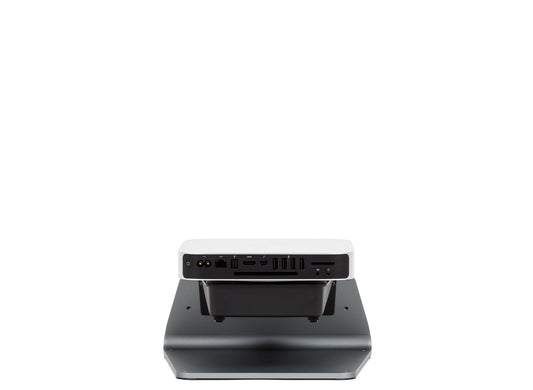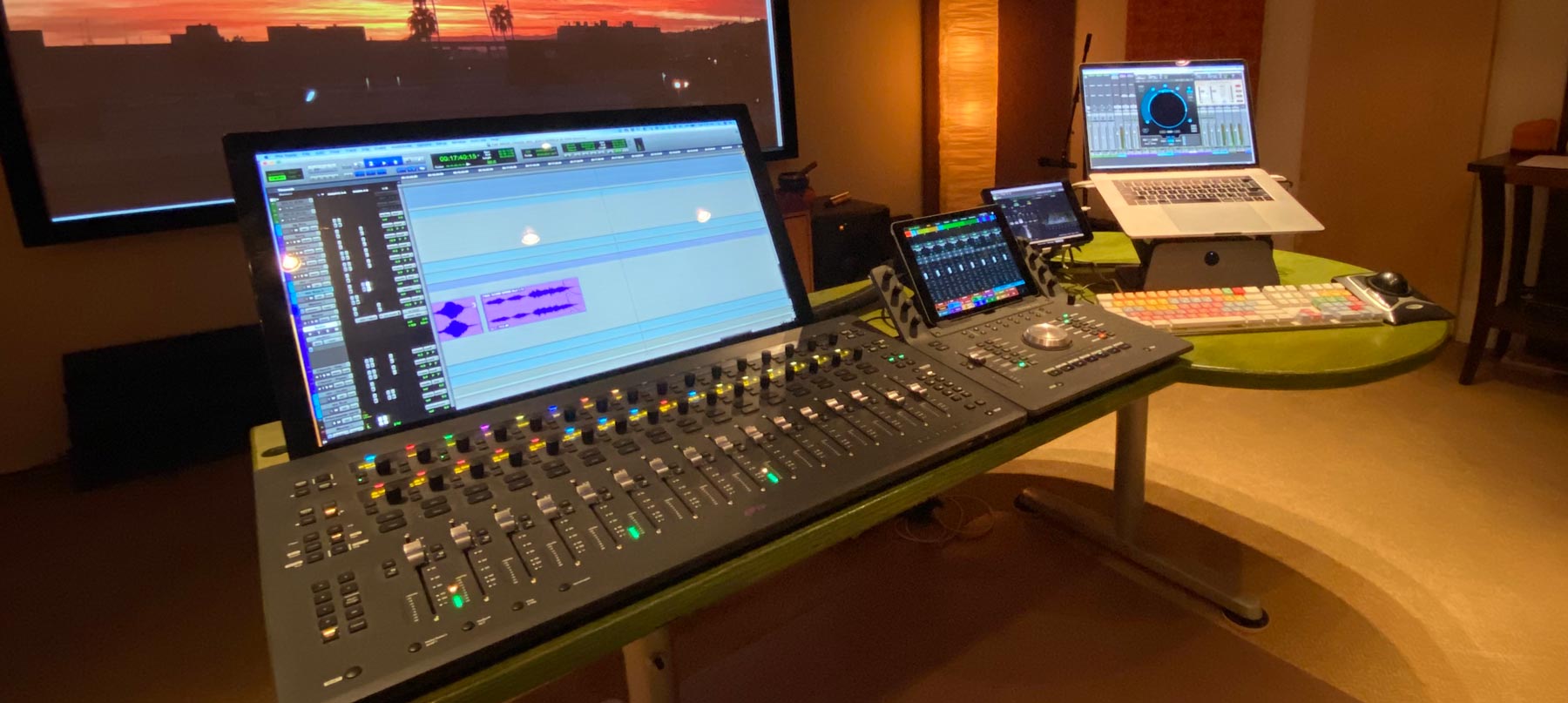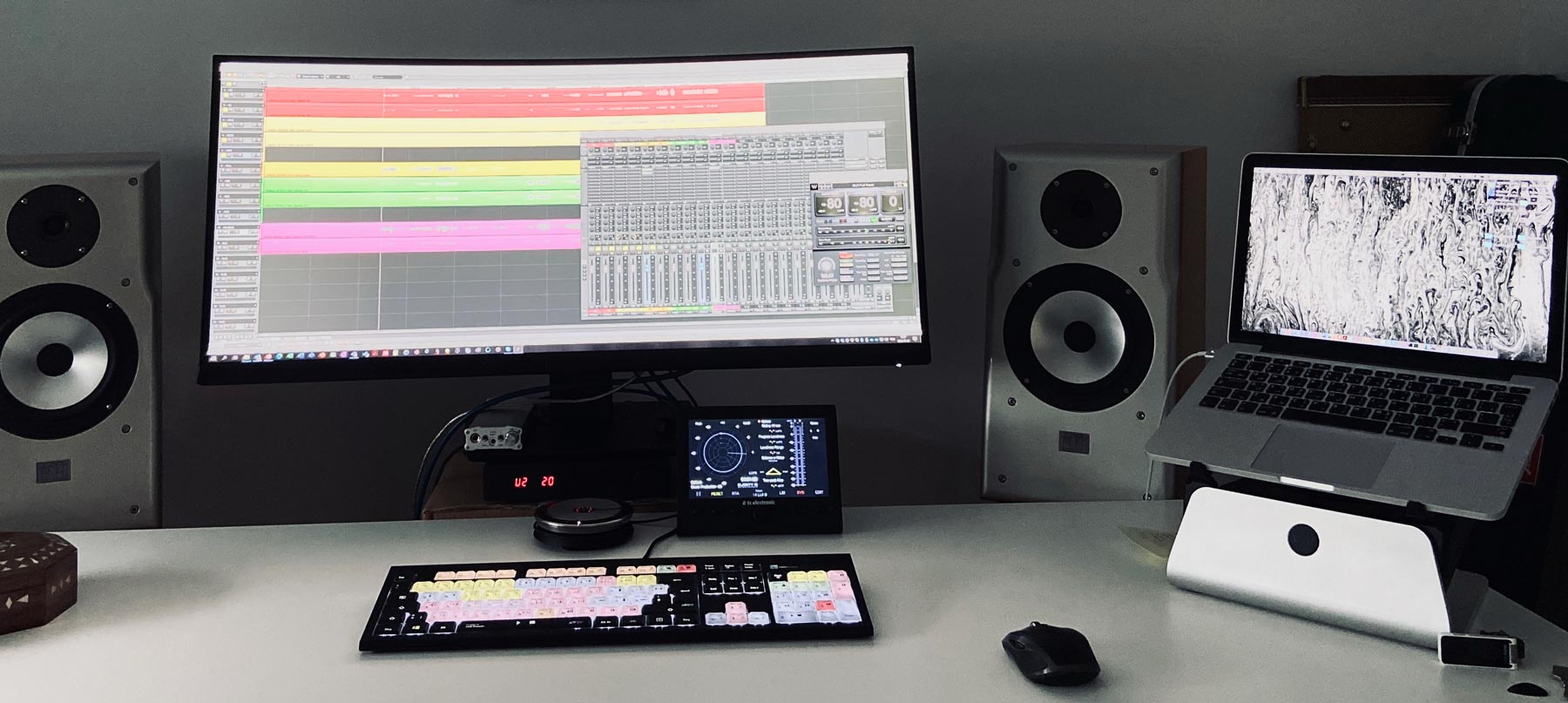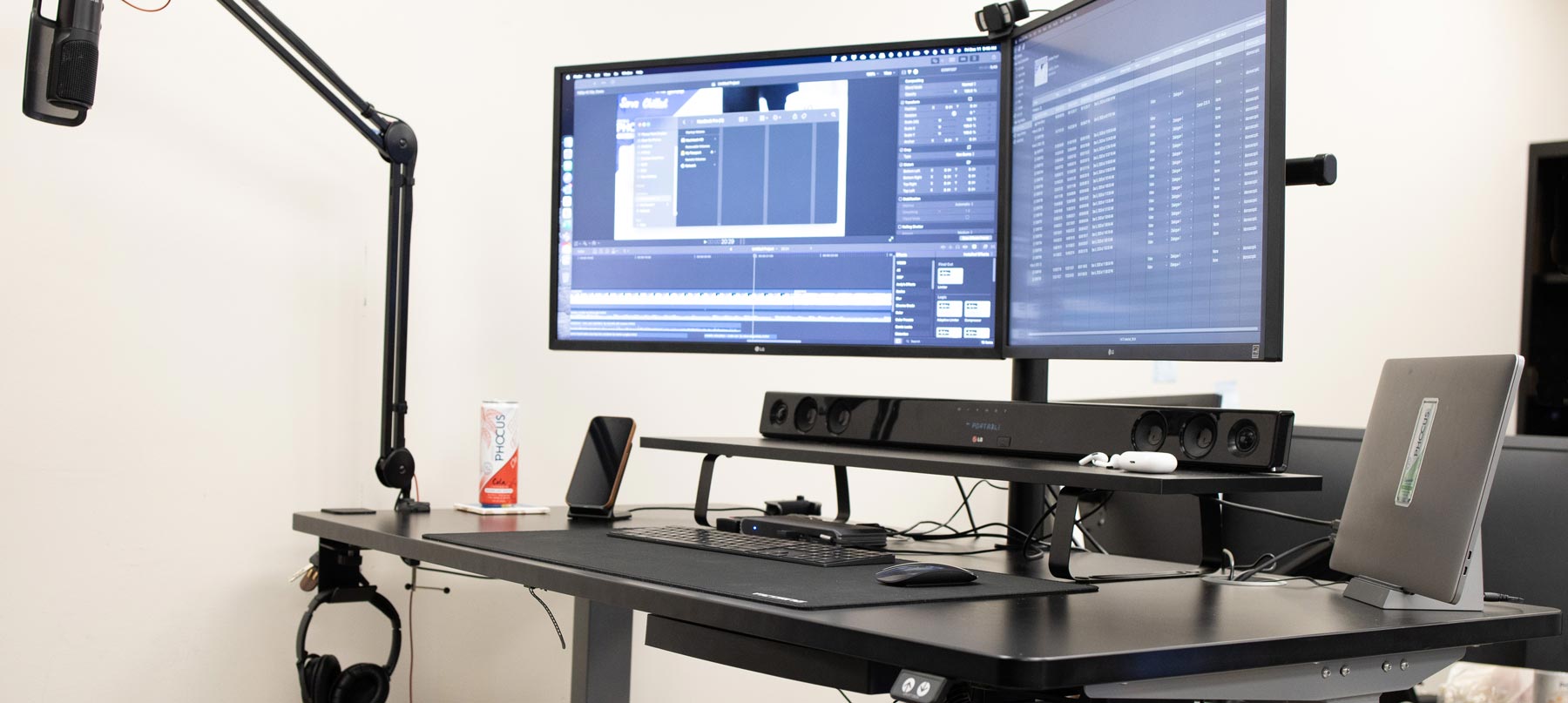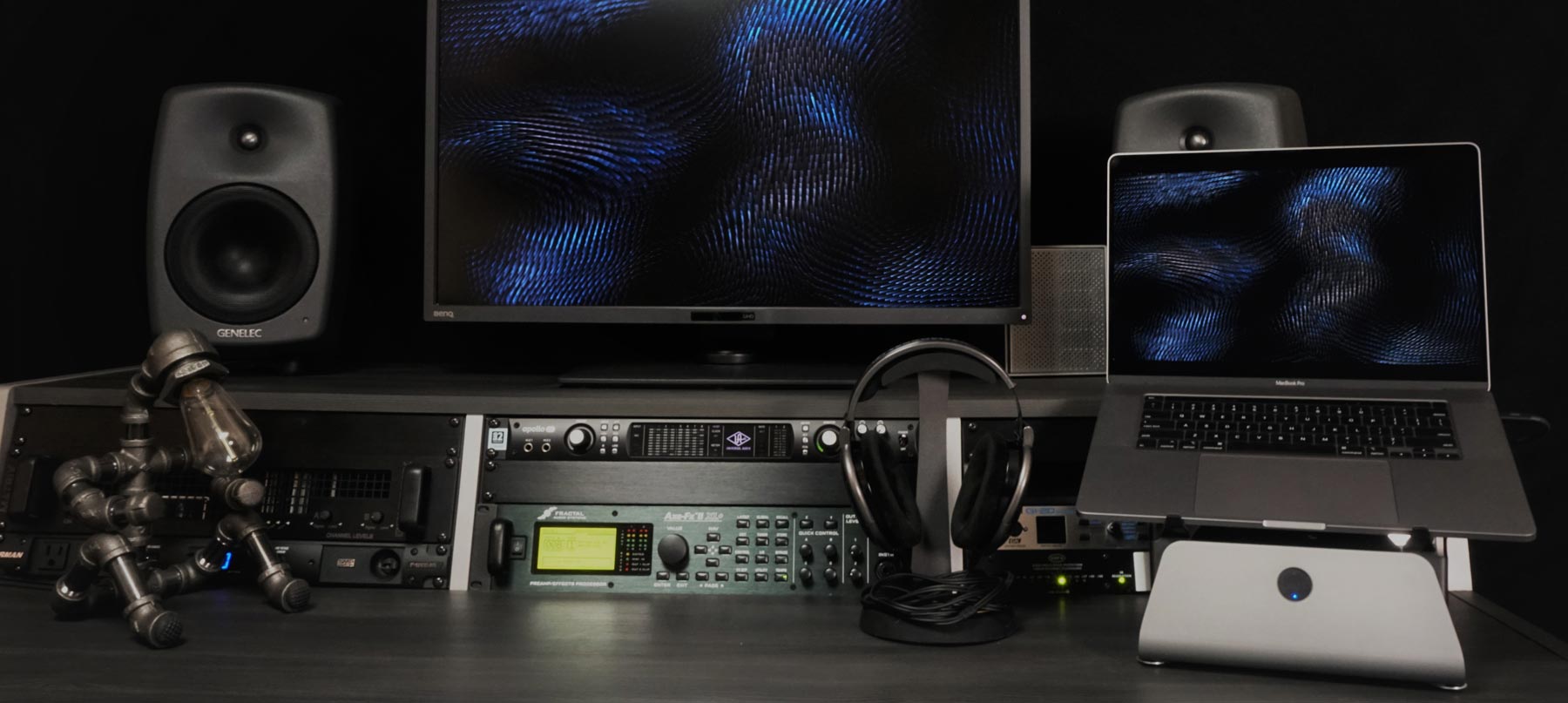PERFORMANCE

Learn about SVALT performance in the following Cooling, Audio, Testing, and Learn More sections.
COOLING PERFORMANCE
SVALT products help reclaim performance for unrivaled cooling and amplified potential. To understand how SVALT products improve performance, we’ve broken down the fundamentals of computer heat management and the role cooling plays in computer performance.
Heat Limits Performance
When it comes to using your laptop, heat generation and increased performance are in a cyclical relationship that feed off of one another. Processors generate heat that can spin up internal fans, stress systems, degrade hardware and throttle processors. This is the basic problem laptop users face, the more you want to do with your laptop, the harder it works, and the hotter and slower it gets.
Processor = Power
Processors are the heart of a computer, responsible for the computer’s overall performance potential. Processors include multiple cores, often with two rated speeds, a base clock speed and a boosted clock speed, which is a higher or overclocked speed available under certain conditions, such as when lower temperatures allow for adequate thermal headroom.
Power = Heat
In addition to being responsible for the majority of a computer’s performance, processors are also responsible for creating the majority of heat. Processors are basically tiny heaters that generate an incredible amount of heat when running at higher speeds and using more power. Adding additional processor cores and running the processors at higher speeds will create the potential for more performance, but will also increase the potential for more heat. Increasing the duration of work will also generate more heat.
Heat = Throttling
If heat is not removed from the processor, then temperatures will rise to the point of causing hardware damage and processor failure. Processor failure should not happen in a properly operating computer because the computer will automatically throttle processor speeds, and this in turn will reduce temperatures and prevent processor failure. Throttling is a basic function and can occur when the processor is running at boosted clock speeds, but it can also occur when running multiple threads at base or lower clock speeds.
Throttling = Slow
While throttling is preferable to frying your processor and other adjacent components, throttling does have a downside, which is reduced processor speeds and slower performance. Throttling’s impact on performance can range lead to a reduction in peak performance, or in extreme cases, slow performance to a crawl, leaving the system unresponsive.
Laptops = Compromise
Laptops and other mobile computers require a more compact and size restricted form factor, which means that most include cooling systems that do not have adequate cooling capacity to avoid processor throttling as a way to manage heat. For instance, processors are often placed in close proximity to other heat sensitive components, resulting in heat bleed out to surrounding components. Tight construction leaves little room for open air space and restricts cooling airflow, which is especially problematic for air cooled systems. Close proximity of components combined with minimal open space makes it hard to remove heat once it has accumulated within the system. Laptops also use smaller heat sinks, heat pipes, heat radiators, cooling fans, and other cooling system components. All combined, this reduces the laptop’s total cooling capacity and means that laptops, as well as compact desktops built with laptop components, are often unable to avoid processor throttling, and therefore have slower performance.
More Cooling = More Performance
Supplemental cooling increases the laptop’s total cooling capacity. Under light and moderate workloads, the laptop transfers cooling loads to the supplemental cooling device, which reduces the demands on the laptop’s built-in cooling system, resulting in quieter built-in fans and/or reduced temperatures. Under heavy and sustained long duration workloads that max out the laptop’s built-in cooling system, supplemental cooling increases the laptop’s overall cooling capacity, which allows laptop processors to run at higher speeds, resulting in less processor throttling and more performance.
SVALT = Cool By Design
Performance is fundamentally limited by the computer’s ability to remove heat, and because laptops typically have less powerful cooling systems, then supplemental cooling is often required to help manage heat. This is why SVALT products use innovative designs in which every inch and every detail has been obsessively researched, tested, engineered and designed to the extreme to help quiet screaming fans, help increase the laptop’s cooling capacity, help reduce processor throttling, and help regain peak performance potential.
SVALT products are designed to work with passive airflows to naturally and silently cool the laptop’s enclosure and support the laptop’s built-in cooling system. SVALT products raise up the laptop and separate the laptop’s hot exhaust air from the center intake vent, which improves the laptop cooling even without supplemental cooling enabled. For the most effective cooling, SVALT products focus supplemental cooling where it is needed the most, at the processor location. SVALT supplement cooling is designed to be both powerful and quiet, and is provided through a variety of methods, such as a thermally conductive heatsink (heatsink models), passive and active airflow (all models), and direct internal processor cooling (multiple models when used with compatible laptops).
Back to topAUDIO PERFORMANCE
SVALT is obsessed with minimizing noise to the point that our newest and best products are designed for silent thermally conductive heatsink cooling that does not require a fan. However, all SVALT products are available with fan cooling as forced air cooling can more rapidly remove heat from heatsinks and help to tackle longer duration high-intensity workloads. To understand how SVALT keeps fan noise to a minimum, we’ve broken down the fundamentals of fan noise.
Fan Models
All SVALT products are available with ultra-quiet Noctua fan models. SVALT doesn’t stop at using ultra-quiet fans as all SVALT products use responsive and natural passive cooling designs so that the laptop can run more efficiently even when the fan is turned off. SVALT product cooling systems are also fully modular with right-to-repair bolted/snapped assemblies so that fans can be easily accessed and swapped out at any point in the future to meet a users particular cooling and audio performance needs.
Fan Noise Levels
SVALT products offer industry leading audio and cooling performance to such an extent that terms like silent and quiet need to be redefined. We have discovered that silent and quiet mean something different for most other products and manufacturers. SVALT defines noise levels as the following:
- Silent: No noise being generated. SVALT offers a full range of silent cooling solutions, with thermally conductive heatsink models offering as much or more cooling than fan equipped models. Also, all SVALT fan equipped products are designed so that the fan can be turned off for silent operation.
- Ultra-Quiet: Sound generation is low enough to be considered inaudible even in quiet workspaces with minimal background noise, so very nearly silent. All of SVALT models are available with ultra-quiet fan cooling through fix-speed or adjustable-speed fans.
- Quiet: Sound generation is low enough to be considered inaudible within a normal workspace with running mechanical systems, and barely audible within a quiet workspace where it could blend into the background noise. All of SVALT models are available with quiet fan cooling through fix-speed or adjustable-speed fans.
- Moderate: Sound generation is moderate and can be easily heard within a quiet workspace where it could be considered disturbing, but barely audible within a normal workspace where it could blend into the background noise of running mechanical systems. All of SVALT models are available with moderate fan cooling through fix-speed or adjustable-speed fans.
- Loud: Sound generation is loud and can be easily heard within a normal workspace where it could be considered disturbing. No currently available SVALT models fall into this category.
Fan Noise Types
Fan noise is typically lumped into a single dBA rating, and while useful for preliminary comparison, it does not reflect the full acoustic experience. After a decade of purchasing and testing most of the best fans available from the best fan manufacturers, we’ve found that in nearly all cases the dBA rating does not accurately describe the fan noise experience and so our redefinition requires consideration of the following two categories:
- Volume: The first category is the noise quantity or volume, for which a dBA rating does a good job of defining. The volume of noise generated comes primarily from a whoosh of air rushing through and around the fan blades. A lower noise volume and dBA rating is generally preferred, however, a low rating does not mean it is quiet, while on the flip side, a high rating does not mean that it is loud and disturbing. The list above gives you a sense of where SVALT models fall within the noise volume category.
- Character - Airflow: The second category is the noise quality or character. The character of the noise generated has to do with how evenly the noise spreads across the acoustic range and its ability to fade or blend into the background noise. The fan blade design and resulting airflow patterns contribute to the noise character and whether it is experienced as disturbing or as unobtrusive.
- Character - Motor: In most fans with lower volume dBA ratings or with adjustable speed fans set within the lower speed rang, the noise character is often most impacted by the fan motor’s emission of high-pitched electronic and mechanical pulsing and whirling noises as they can cut through background noise, grab a person’s attention and lead to distraction. Fans with higher volume dBA ratings or adjustable speed fans set within the higher speed rang make more whooshing airflow noise that often masks the fainter fan motor noises. SVALT fans are selected for their low-levels of motor noise and other distracting characteristics.
Fan Replacements
The same fan series from the same manufacturer can sometimes have significantly different levels of motor noise depending on 3 vs 4-pin (PWM) configuration, maximum fan speed (RPM) and other features. We have purchased, tested and selected the particular fan model/configuration that is the quietest, and so we recommend replacing a SVALT fan from SVALT accessories. However, all SVALT products are right-to-repair so if you would like to purchase a replacement fan from a source other than SVALT, then please check the product page specs for the fan model ID or contact us for details.
Back to topTESTING PERFORMANCE
Conventional benchmark tests typically gauge performance by testing for a few minutes and then assigning a score based on how the test compares to previously conducted tests. The process of testing supplemental cooling differs from typical performance benchmark testing in that two tests are required, and the two tests need to be conducted under identical conditions with supplemental cooling being the only difference between the two tests.
Controlling Conditions
To test supplemental cooling and to accurately measure its influence, tests are conducted under strictly controlled conditions so that supplemental cooling is the only variable influencing the results. Each test session includes two tests, a SVALT test with supplemental cooling and a CONTROL test without supplemental cooling. Conditions between each test need to be as close to identical as possible (ambient air temperature, physical placement, non-thermally conductive insulated base, starting laptop temperatures, internal fan speeds, eliminated non-test background activities, and single applied testing workload) and results need to be based on analysis from direct sensor data logs (component temperatures, processor power, speed, etc).
Measuring Cooling
The impact of supplemental cooling can be measured through the following changes in the laptop between the SVALT test and CONTROL test: 1) a reduction in laptop fan speeds, 2) a reduction in laptop temperatures, 3) a reduction in throttling that will lead to an increase in processor power/speed, and 4) any combination of the three. Measuring supplemental cooling is easier when a test is setup to isolate only a single variable. For instance, testing for temperature change in the laptop will only show the full impact of supplemental cooling when the laptop’s built-in fans are off and there is no throttling for either the SVALT and CONTROL test. Conversely, testing for performance change will only work when throttling is present. The presence of throttling makes it near impossible to measure supplemental cooling through temperatures as more cooling will increase processor power/speed, which in turn generates more heat. For the impacts of supplemental cooling to be more easily measured, an individual test typically lasts a minimum of 30-minutes.
Test Results
SVALT product cooling and audio performance shown in the graph at the top of this page is approximate and based on a wide range of averaged and normalized testing. SVALT conducts a variety of tests through conceptual research, product development and final production proving phases. Test results found on this website are meant to provide a more general understanding of built-in laptop cooling systems and how they respond to supplemental cooling. Actual results vary depending on a product configuration, fan model, fan speed setting, laptop model, laptop configuration, laptop operation, workstation setup, external monitor setup, and a variety of additional testing conditions.
Back to topLEARN MORE
Learn more about each SVALT product’s cooling system and its optimization for a particular workstation configuration, laptop setup and/or laptop model on the product page.
Learn more by comparing each product’s cooling system features and specs, comparing performance rankings, comparing performance by laptop models and laptop setup, and more on the Compare page.
Learn more about laptop built-in cooling systems and recommended SVALT products for each Apple laptop model on our Laptops page.
Learn more about SVALT’s rigorous testing process through our Testing Guide page.
Learn more about general computer cooling from the following Wikipedia links:
Back to top
